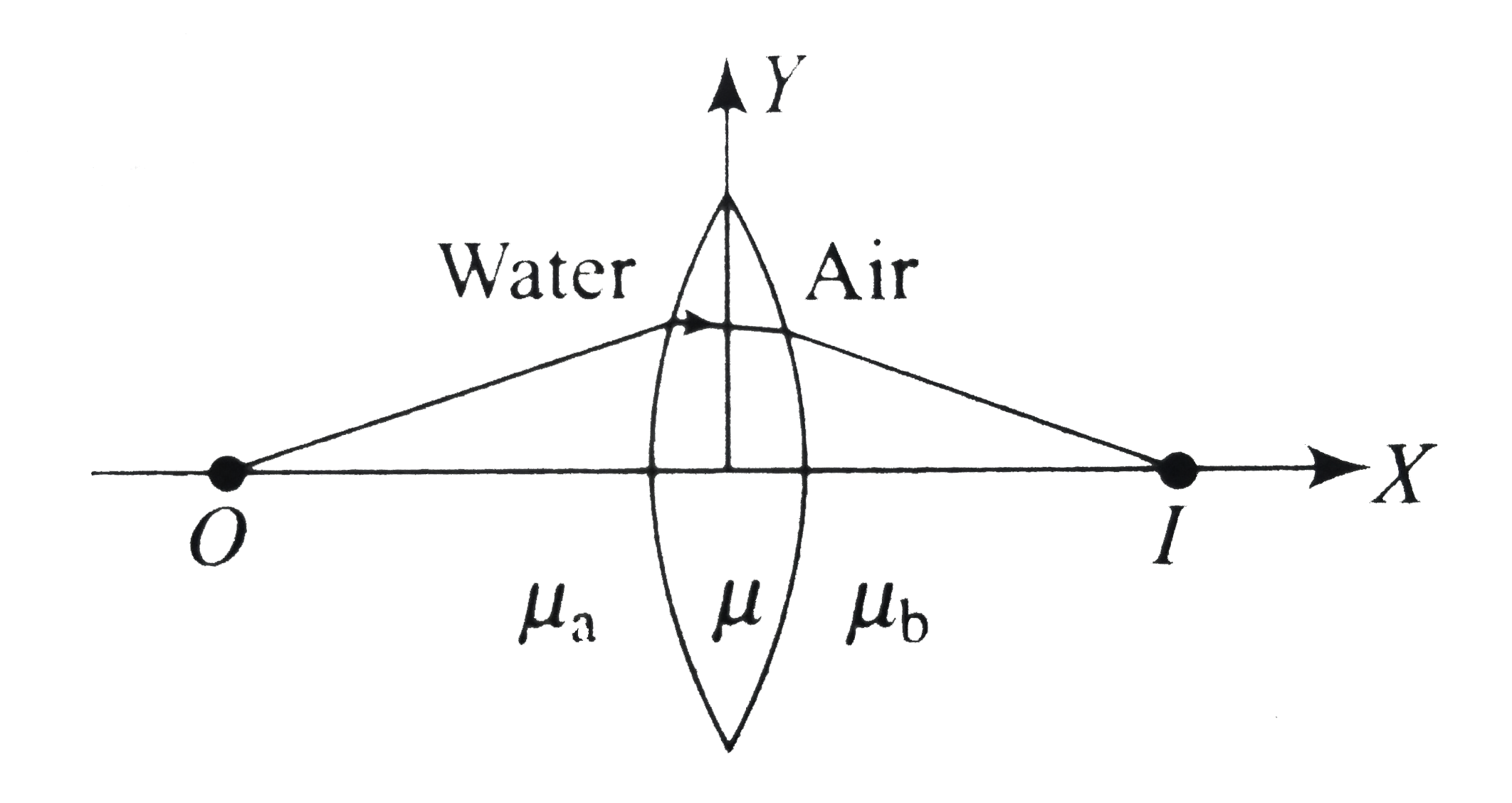A biconvex lens of focal length 20cm, made of glass or refractive index 1.5, has water (μ=1.33) on one side and air on the other. An object is placed 15 cm form the lens on the side with water. Where is the image formed?
Ray diagram: The path of a typical light ray is shown in the following figure.
This problem corresponds to the situation of a different medium on eith er side of the lens. The governing equation is
μbv−μau=μ−μaR1+μb−μaR2
Here, μ=−15cm,μa=1.33,μb=1,μ=1.5
To complete the problem will sitll need the radius of curvature of the two sides of the lens.
Since it is a biconvex lens, R1=R2=R and
1f=(μ−1)(2R)
or R=20cm
Therefore, R1=+20cm and R2=−20cm.
Substituting in Eq. (i), we get v=10.3cm

Topper's Solved these Questions
- GEOMETRICAL OPTICSBook:CENGAGE PHYSICSChapter:GEOMETRICAL OPTICSExercise:Exercise1.7
Explore 21 Videos
- GEOMETRICAL OPTICSBook:CENGAGE PHYSICSChapter:GEOMETRICAL OPTICSExercise:Subjective
Explore 26 Videos
- GEOMETRICAL OPTICSBook:CENGAGE PHYSICSChapter:GEOMETRICAL OPTICSExercise:Exercise1.5
Explore 22 Videos
- FRICTIONBook:CENGAGE PHYSICSChapter:FRICTIONExercise:QUESTION BANK
Explore 1 Video
- GRAVITATIONBook:CENGAGE PHYSICSChapter:GRAVITATIONExercise:Question Bank
Explore 39 Videos
Similar Questions
If a lens of focal length 20 cm, made of glass of refractive index 1.5, is placed in a liquid of refractive index 1.25, the focal length of the lens becomes ___________.
View SolutionA convex lens of focal length 20cm and made of glass (μ=1.5) is immersed in water of μ=1.33 Calculate change in focal length of the lens.
View Solution
Knowledge Check
A convex lens of focal length 20 cm made of glass of refractive index 1.5 is immersed in water having refractive index 1.33. The change in the focal length of lens is
A62.2 cmB5.82 cmC58.2 cmD6.22 cmA convex lens focal lenghts 30 cm made of glass of refractive index 1.5 is immersed in water having refrctive 1.33. The change in the focal length of lens is
A62.3 cmB87.4cmC58.2cmD73.6cmA convergent lens of focal length 20cm and made of a material with refractive index 1.1 is immersed in water. The lens will behave as a
AConverging lens of focal length 20cmBConverging lens of focal length less than 20cmCConverging lens of focal length more than 20cmDDivergent lens
If a lens of focal lenth 20 cm, made of glass of refractive index 1.5, is placed in a liquid of refractiven index 1.25, the focal length of the lens becomes _______.
View SolutionA double convex lens made of glass of refractive index 1.56 has both radii of curvature of magnitude 20cm. If an object is placed at a distance of 10cm from this lens, find the position of image formed.
View SolutionA glass slab of thickness 2cm and refractive index 2 is placed in contact with a biconvex lens of focal length 20cm. The refractive index of the material of the lens 1.5 . The far side of the lens is silvered. Where should an object be placed in front of the slab so that it images on to itself?
View SolutionA biconvex lens has radii of curvature 20 cm and 40cm. The refractive index of the material of the lens is 1.5. An object is placed 40cm in front of the lens. Calculate the psition of the image.
View SolutionA double convex lens of focal length 20 cm is made of glass of refractive index 3 / 2. When placed completely in water (.aμw=4/3), its focal length will be
View Solution